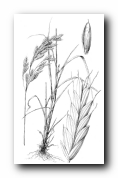
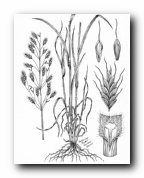
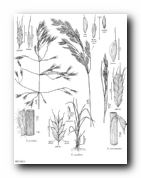
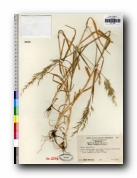
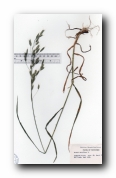
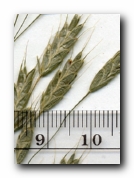
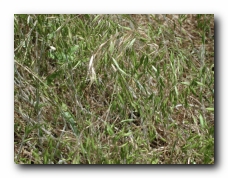
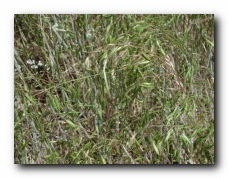

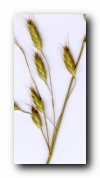
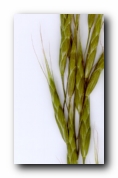

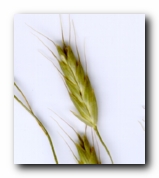
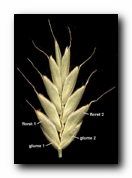
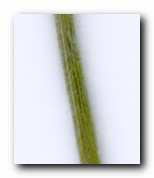
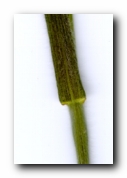
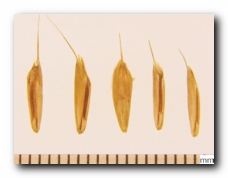
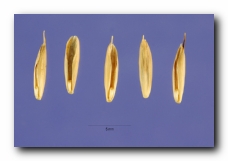
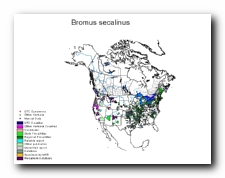
40" Rows:
Broadcast:
Sandy:
Loam:
Clay:
Mature Plant: Leaves and ligule are similar to those of the seedling. Blades are flat, hairy on both surfaces, and sharply pointed. Sheaths are rounded, hairy, and have prominent pinkish veins.
Special Notes:
| Origin: | Native to North America | |
| Use: | Annual, cool warm season, native grass that provides poor grazing for wildlife and livestock. | |
| Image: |



















|
|
| Plant Description: | ||
| General | ||
| Life Span | Annual | |
| Growth Form | tall, erect, bunchgrass | |
| Management: | ||
| Seeding Rate 40" Rows: Broadcast: |
||
| Planting Date | ||
| Planting Depth | ||
| pH requirement | ||
| Soil texture Sandy: Loam: Clay: |
||
| Cold Tolerance: | ||
| General | Provides poor grazing for wildlife and livestock. | |
| ID Features: |
Seedling: The first leaf blade is linear and opens perpendicular to the ground. Leaves are rolled in the bud, lack auricles, and have a membranous ligule that is delicately fringed at the top. Young leaf blades are twisted and appear to be spiraling upward. Blades have soft, short, dense hairs on both surfaces. Rounded sheaths have similar hairs and are whitish with a tinge of red at the base. Mature Plant: Leaves and ligule are similar to those of the seedling. Blades are flat, hairy on both surfaces, and sharply pointed. Sheaths are rounded, hairy, and have prominent pinkish veins. |
|
Special Notes: |
Rye Bromegrass [Bromus secalinus] Information #1 | |